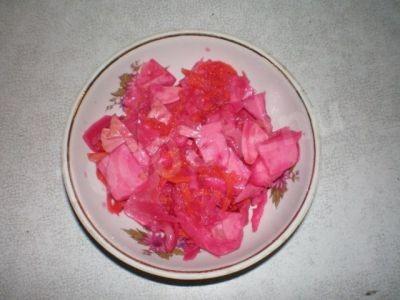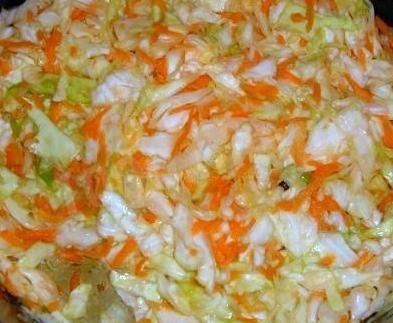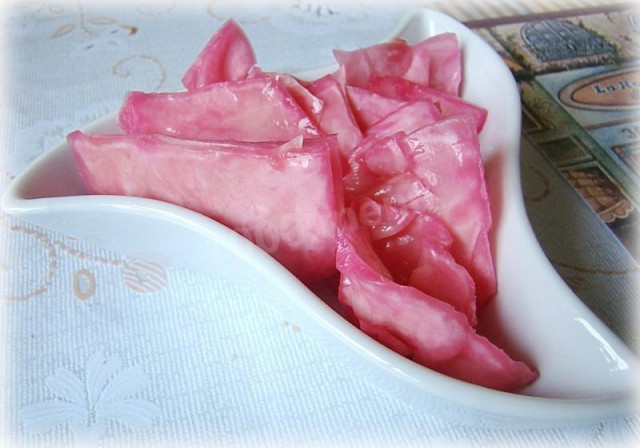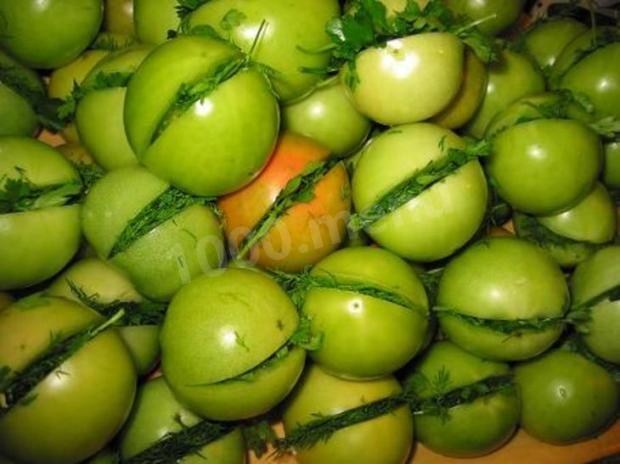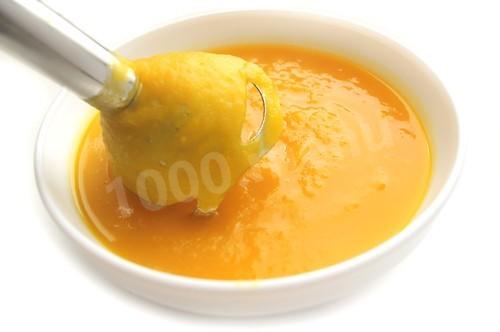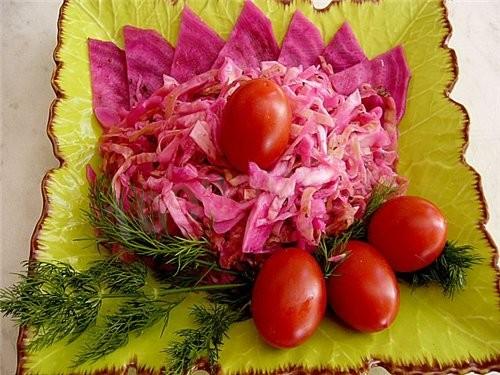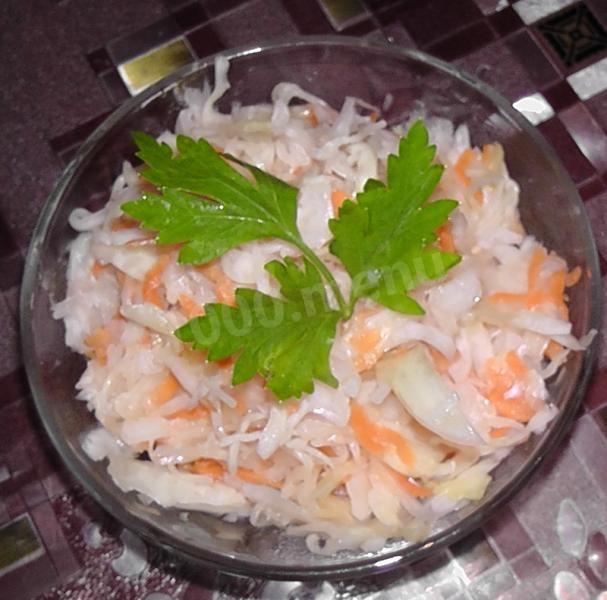Composition / ingredients
Cooking method
Such sauerkraut with beets is very easy to prepare, and it tastes great. When it is ready, it can either be served in whole pieces, or chopped finely, seasoned with vegetable oil and eaten as a salad. This food raises the appetite well. Personally, I wrote this recipe down in my notebook and actively use it (this is Georgian cuisine).
Thoroughly wash all the vegetables. After cutting each cabbage head into several parts, remove the stumps. Each cabbage piece should weigh no more than three hundred grams (you can use kitchen scales for this). Horseradish is rubbed on a fine grater, and garlic is cut into thin plates. Peeled beets are cut into sufficiently large cubes. We take an enameled bucket and put cabbage mixed with beetroot, horseradish, garlic and chopped parsley in it. In hot boiled water, we dilute sugar and salt, put the brine to boil. When it cools down and becomes warm, pour it over the cabbage. Cover with a plate of suitable size, and place the load on the plate. Any large stone will do (before that it needs to be boiled several times in boiling water) or a kettlebell. It is necessary that the plate presses very tightly on the cabbage. We cover the bucket with a linen towel and put it in a dark, cool place for a week.
Caloric content of the products possible in the composition of the dish
- Beetroot - 40 kcal/100g
- Dried beetroot - 278 kcal/100g
- Boiled beetroot - 49 kcal/100g
- Garlic - 143 kcal/100g
- Horseradish - 49 kcal/100g
- Grated horseradish with lemon - 117 kcal/100g
- Grated horseradish with garlic - 72 kcal/100g
- Horseradish grated table - 117 kcal/100g
- Parsley greens - 45 kcal/100g
- Granulated sugar - 398 kcal/100g
- Sugar - 398 kcal/100g
- Hot capsicum - 40 kcal/100g
- Salt - 0 kcal/100g
- Water - 0 kcal/100g
- White cabbage - 28 kcal/100g
- Boiled white cabbage - 21 kcal/100g

